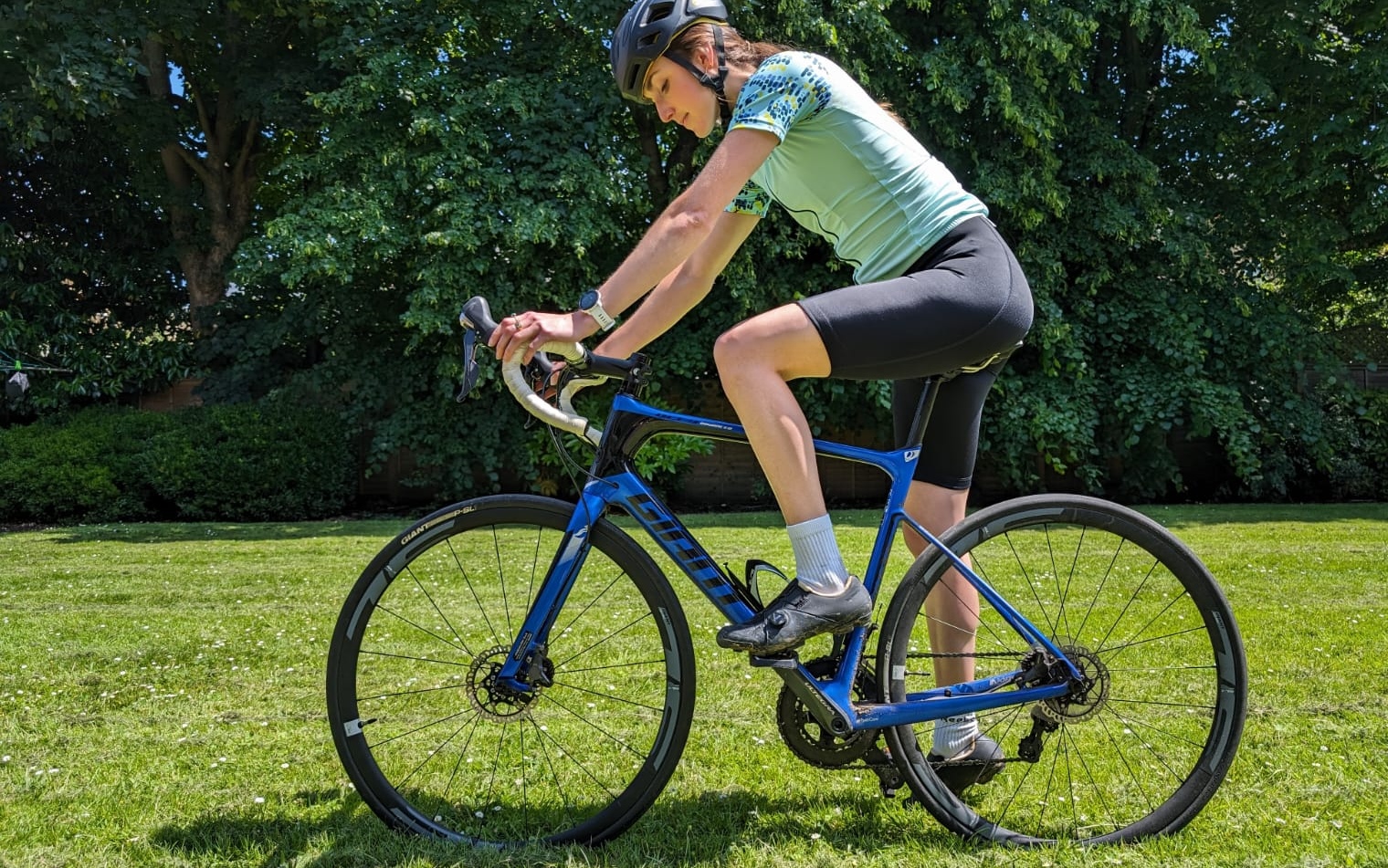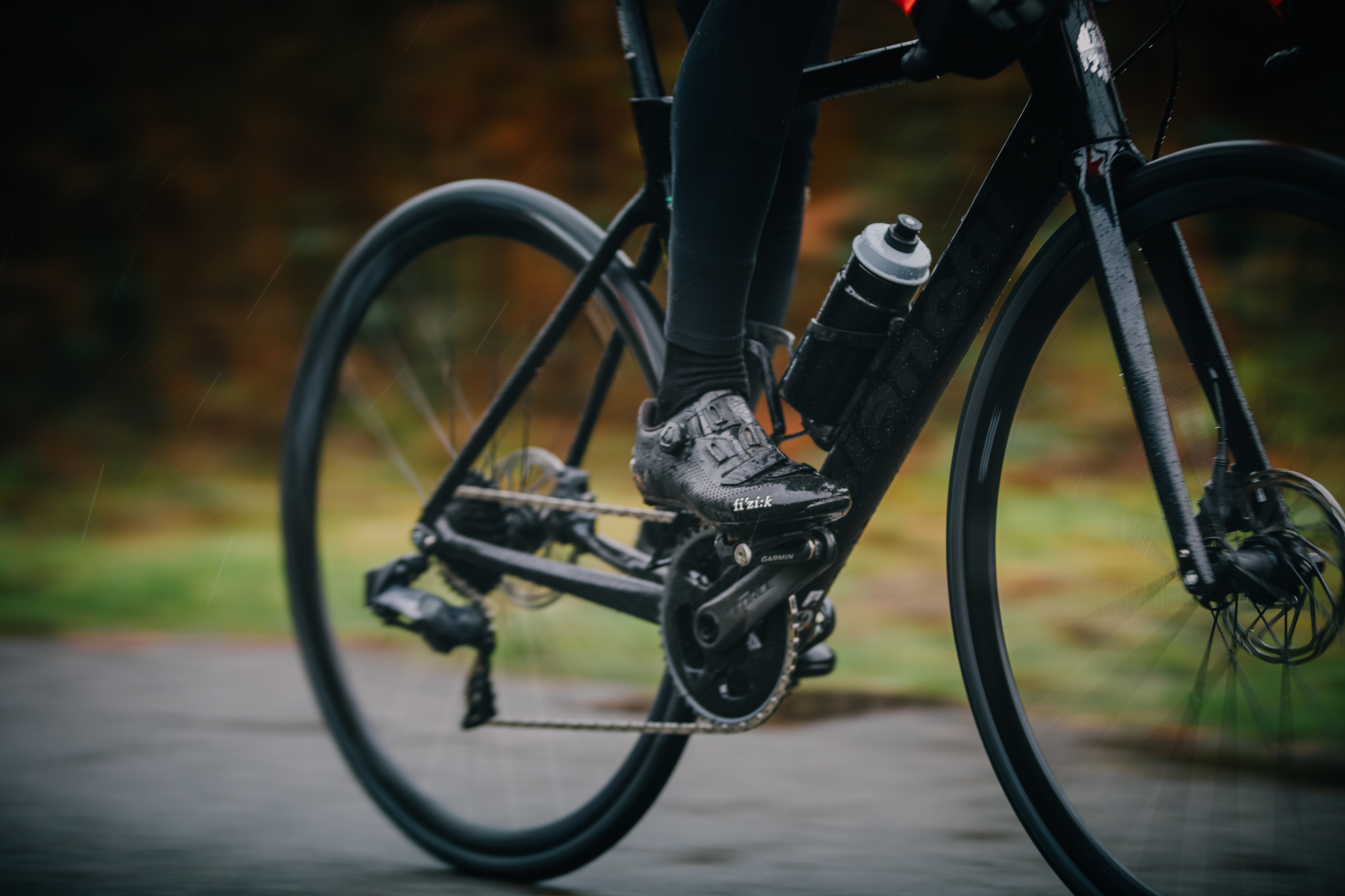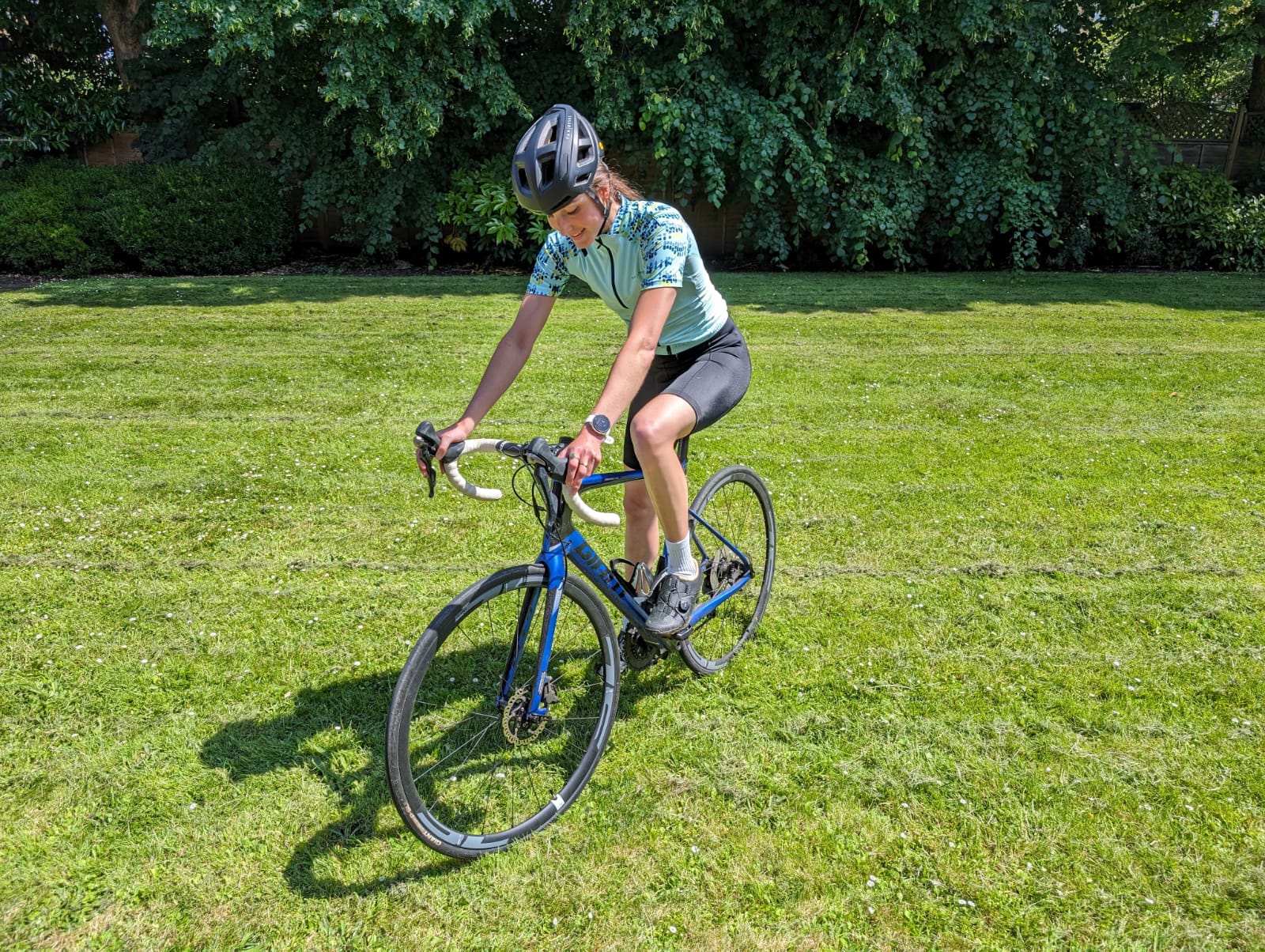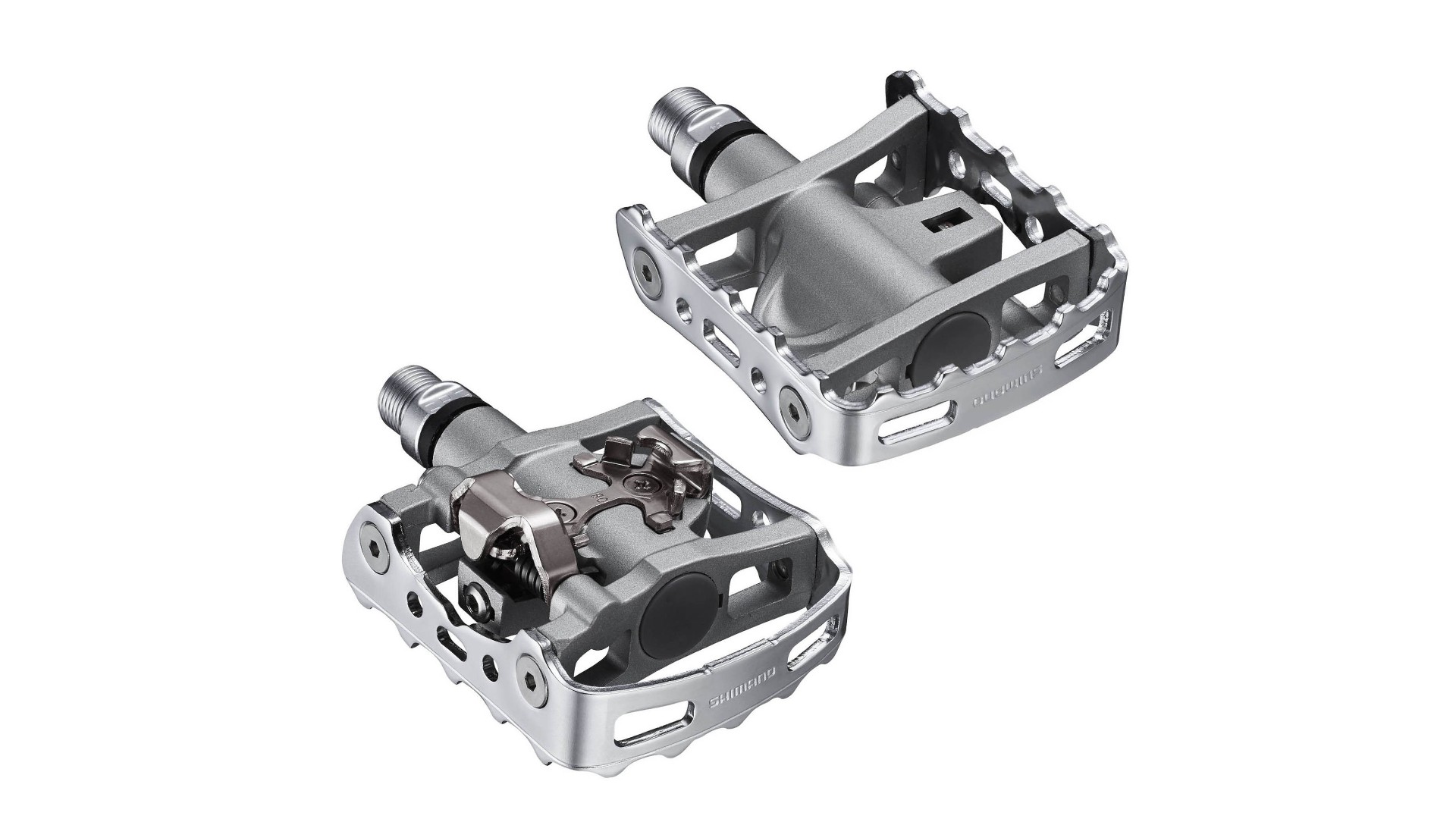I learned how to ride clipless pedals for the first time after cycling with flat shoes for years - here's the how and why
Learning to cycle clipped in is a rite of passage for any cyclist, but it takes practice, as Ellie Donnell found out

Mastering cycling using clipless pedals is a right of passage for most cyclists. It might seem daunting at first, and the learning curve is steep, but once you’ve cracked the art of riding clipped-in you’ll never look back.
I’ve been cycling consistently for the last few years and delayed buying shoes for riding clipless pedals until recently, partly out of necessity - I had my first 100 mile sportive on the horizon and wanted to get to grips with cleats before the big day - and partly because I knew that I was missing out on maximising the potential of my rides.
But between evenings spent Googling 'how to set up cleats', and cycling back and forth outside my flat to get to grips with clipping in and out, I’ve finally mastered the art of riding clipped in, with clipless pedals. Here’s everything I learned along the way.
What are the benefits of riding with clipless pedals?
Clipless, clipped in?

It's confusing to modern cyclists that 'clipless' systems require rides to 'clip in'.
History explains it. In days gone by, riders used to clip themselves into pedals, using toe straps. Modern pedal systems all do away with that extra bit of hassle.
There’s a reason why most cyclists choose to wear cycling shoes designed to be paired with cleats over normal, flat shoes.
According to Nas Karimi, Head of Bike Fitting at Pearson Cycles, one of the main benefits of riding clipped-in is increased power output, allowing you to literally 'put your foot down' while feeling confident your feet won't fall off the pedals.
"Cycling shoes are typically stiff soled which helps transfer power to the pedal. They also stop you slipping off the pedal when producing power from each leg extension", he explains.
When fitted correctly, clipless shoes make riding much more comfortable, too. "Cycling in general requires a huge amount of pedal revolutions and clipless systems ensure you are pedalling efficiently and smoothly. Connecting a rider's foot to the pedal will ensure you feel more connected to the bike".
The latest race content, interviews, features, reviews and expert buying guides, direct to your inbox!
This is important, especially if you’re prone to experiencing niggles while riding. The smoother the movement, the less likely you are to feel discomfort, which can make a huge difference if you’re in the saddle for hours. "Clipless pedals encourage a fluid pedal stroke and alignment of your legs which can reduce the chance of pain and injury", says Karimi.
Riding clipped-in isn’t just for pros and everyone can take advantage of the benefits of proper cycling shoes.
How to get started with clipless pedals

There are several different styles of clipless pedals for road bikes, but Karimi explains that it mainly comes down to personal preference. I went for a shoe with an SPD cleat - specifically the Shimano XC3 MTB shoe - to pair with a dual-sided pedals for my first foray into clipless riding.
This pedal has a flat platform on one side, and an SPD mechanism on the other. It gives me the flexibility to wear flat shoes for commuting, and the shoe itself is generally more comfortable than road-specific equivalents because it's designed for touring and commuting. The recessed cleat means that it's easier to walk normally when off the bike, too. The benefit of shoes and cleats designed for road use is a larger contact patch, which aids power transfer.
Getting the positioning right is another beast entirely and takes a bit of tinkering. "The main outcome is to position your foot on the pedal in a stable and comfortable way," Karimi explains. "This can take time to get right as it will require testing. Mainly the foot should not have any pressure under the toes when driving down on the pedals."
I found that it required a pinch of fine tuning, but you won’t get a truly accurate result until you go on your first ride in them. My left cleat, for example, was rotated slightly inwards at first which caused discomfort in my knee, but a simple adjustment corrected this immediately. Take your time and make small changes until you find a position that suits you.
Karimi concurs: "The main thing to remember is to be patient and calm - clipping in is a new habit and can take time. You will gain confidence with every ride."
Everything I learned on my first day of clipless cycling

When I said the learning curve is steep, I meant it. I made pretty much every mistake in the book when riding clipped-in on my first day of cycling, but after a few minor setbacks, my progress was quick and seamless.
Falling over can be helpful
Falling off your bike at the start can be extremely useful because it teaches you exactly what not to do. The first time I went on a ride using clipless pedals I stacked it after 10 minutes. While it’s a humbling experience, it also shocks you into not repeating the same mistakes again.
Go slow and don’t break suddenly
The reason I fell off my bike was because I was too close to the vehicle in front of me and didn’t have enough time to clip out. Especially when starting out, keep a good amount of distance between you and anything that might cause you to stop suddenly. If you’re too close to a car or junction and need to break quickly, you won’t have enough time to unclip and plant your foot on the floor. It’s better to gradually slow to a halt and unclip with lots of time to spare. Believe me, I learned the hard way: start by practicing in an area with no traffic, and ideally, on a soft surface like grass.
You’ll probably have to break old habits in order to form new ones
I’d been riding consistently using flat shoes for a few years before making the switch to clipless, so the change felt very uncomfortable at first. I was used to having total freedom with my legs and feet, so the feeling of being ‘locked in’ was a little strange. This does take some adjusting to, but I found the motion became second nature in no time. To speed up the process, practice clipping in and out as much as possible on quiet roads before going on a longer ride.
Keep your eyes on the road when clipping in
At the beginning, I found myself looking down at my feet when trying to clip in to check the position of my shoe. That’s fine, and a natural response while it still feels alien, but eventually you want to be able to clip-in without having to look at your feet, so try to go by feel as much as possible.
Remember, you can still pedal without being clipped in
One of my main fears at the start was not being able to clip in quickly enough at traffic lights. There can be a lot of pressure to move off quickly when you have a line of cars behind you, but what really helps is remembering that you can still pedal even when not clipped in. Simply get the bike moving so you’re not holding anyone up, then take your time clipping in once you’re on the move. You’ll get there eventually!
Best clipless pedals: our picks
There are many clipless pedals on the market, with a wide range of prices to match. Here we've selected two entry level models, one SPD and one from Look, that represent decent value and are both a solid entry point in to the clipless world.
If you're interested in dual-sided SPD or SPD with a platform, then check out some of the best gravel pedals for comparison. Likewise, if its a SPD-SL style road pedal you're looking for, then our guide to the best road pedals breaks down some of the offerings from Shimano, Look and more.

Shimano M324 combination pedals
Specifications
Reasons to buy
Reasons to avoid
One of the best sellers in SPD/platform combination category, Shimano's M324 pedals come supplied with a set of cleats supplied.
The platform has plenty of grip, whilst the clipless mechanism in the centre lets you pull up on the pedal stroke as well as push.
They're not the lightest pedals but they are stoutly made.The dual sided feature means you can use these on your commuter, allowing you to switch between 'street' shoes and cycling shoes without having to swap your pedals. Equally, they're well suited to a gravel bike, where you'll be using shoes with a grip and may benefit from having both a platform and a SPD option.
However, if you're looking for an out-and-out road pedals these are a little heavy, and more importantly, aren't compatible with road shoes. Here you'll require a SPD-SL or similar, such as the new pedals on our list...

Specifications
Reasons to buy
Reasons to avoid
The Look Keo Classic are great pedals for those new to clipping in. The coil based mechanism makes it straightforward to adjust the tension for an easy release. helping to build confidence when you're just starting out.
Likewise, the good size contact patch for your foot provides a stable pedalling platform, and one that we've found from experience still offers enough power transfer for stronger riders.
The composite material does add a weight to the scales, but it doesn't detract from their performance and certainly helps to make them more affordable. In short, a sensibly priced and easy option for beginners to take their first steps into the world of clipless pedals.
Ellie Donnell is a contributing writer for Cycling Weekly and has written for a broad range of titles including Delicious Magazine, Co-op, The Independent and SquareMeal (where she currently holds the role of Managing Editor). While her specialism is in food and drink, Ellie is hugely passionate about fitness and practices a 'hybrid' approach to training covering running, weightlifting and cycling. Her love for cycling has flourished in recent years, causing her to purchase her first carbon road bike, participate in a duathlon and tackle a three-day cycling tour from Reading to Devon – although you’ll often find her doing laps of Richmond Park at the weekend.